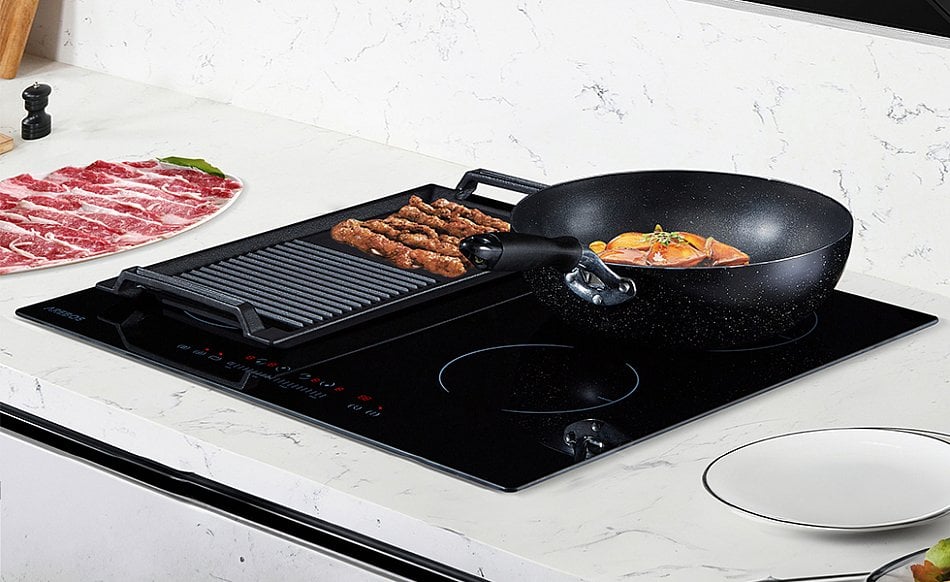Cast Iron Cookware for Induction Use: A Guide for Barbecue Enthusiasts
Written By James Morgan
The art of barbecuing is as much about the tools as it is about the technique. For barbecue enthusiasts, the choice of cookware can significantly impact the quality of the meal. Among the various options available, cast iron cookware for induction use stands out for its versatility and durability. This article delves into why cast iron is a favorite among grill masters and how it works seamlessly with induction cooktops.
Induction cooking, which utilizes electromagnetic technology, has revolutionized modern cooking. It offers precise temperature control, energy efficiency, and rapid heating. However, one of the critical considerations is the type of cookware used. Enter cast iron - a material that not only complements induction technology but enhances the barbecuing experience.

The Benefits of Cast Iron Cookware
Cast iron cookware is renowned for its ability to retain and distribute heat evenly. This quality is particularly beneficial when grilling, as it ensures that meat is cooked uniformly. Moreover, cast iron is incredibly durable, often lasting generations if properly maintained. Its robustness makes it ideal for both indoor and outdoor cooking environments.
Additionally, cast iron's natural non-stick surface, developed through seasoning, makes it an excellent choice for cooking a variety of foods without the risk of sticking. For barbecue enthusiasts, this means being able to sear meats to perfection, creating those sought-after grill marks while locking in flavors.
How Induction Interacts with Cast Iron
Induction cooktops require cookware with a magnetic base to function effectively. According to Field Company, cast iron, being inherently magnetic, is perfectly suited for this type of cooking. The magnetic properties of cast iron allow it to efficiently convert the induction cooktop's electromagnetic energy into heat.
For those new to induction cooking, it's essential to understand how the technology works with cast iron. The cooktop generates a magnetic field, which induces electric currents in the cookware, thereby producing heat. This method ensures precise temperature control, which is crucial for achieving the perfect barbecue.
Choosing the Right Cast Iron for Induction
When selecting cast iron cookware for induction, it's important to consider the size and weight of the pieces. Larger and heavier skillets or Dutch ovens may take longer to heat but will retain heat more effectively. It's also vital to ensure that the base of the cookware is flat to maintain good contact with the induction surface.
Many barbecue enthusiasts swear by the versatility of a cast iron skillet. Its ability to transition from stovetop to oven makes it ideal for a range of cooking techniques. Whether you're searing steaks or baking cornbread, a cast iron skillet is a versatile addition to any induction-friendly kitchen.
Seasoning and Maintenance Tips
Proper care and maintenance of cast iron cookware are essential to ensure its longevity and performance. Regular seasoning helps maintain the non-stick surface and prevents rust. To season your cast iron, apply a thin layer of cooking oil and bake it in the oven at a moderate temperature for an hour. This process should be repeated periodically to maintain the cookware's quality.
Cleaning cast iron is straightforward, but it requires a gentle touch. Avoid using harsh detergents or abrasive scrubbers, as they can strip the seasoning. Instead, use warm water and a soft brush to clean the cookware. If food residue is stubborn, consider boiling water in the pan to loosen it. After cleaning, dry the cookware thoroughly and apply a light coat of oil to prevent rusting.
Common Misconceptions About Induction and Cast Iron
Some barbecue enthusiasts may have reservations about using cast iron on induction cooktops. One common misconception is that induction cooking is limited to specific types of cookware. However, as long as the cookware is magnetic, it can be used on induction surfaces. This includes not only cast iron but also certain stainless steel and enameled cast iron pieces.
Another misconception is that induction cooktops do not generate enough heat for proper searing. In reality, induction cooktops can reach high temperatures quickly, making them suitable for searing meats to perfection. The key is to preheat the cast iron skillet properly to achieve the desired results.

Conclusion: Embracing Cast Iron for Induction Cooking
For barbecue enthusiasts, the combination of cast iron cookware and induction technology offers a seamless cooking experience. The ability of cast iron to retain and distribute heat evenly makes it an excellent choice for grilling and searing. Additionally, its compatibility with induction cooktops provides precise temperature control, enhancing the overall cooking process.
By understanding the benefits and proper care of cast iron cookware, barbecue enthusiasts can elevate their cooking to new heights. Whether you're a seasoned grill master or just starting, incorporating cast iron into your induction cooking repertoire is a decision you won't regret.
FAQs
Q: Can I use any cast iron cookware on an induction cooktop?
A: Yes, as long as the base is flat and magnetic, cast iron cookware is suitable for induction cooktops.
Q: How do I know if my cast iron is induction compatible?
A: You can test your cookware with a magnet. If it sticks to the bottom, it is induction compatible.
Q: Is special maintenance required for cast iron used on induction cooktops?
A: No special maintenance is needed. Regular seasoning and proper cleaning will keep your cast iron in excellent condition.



